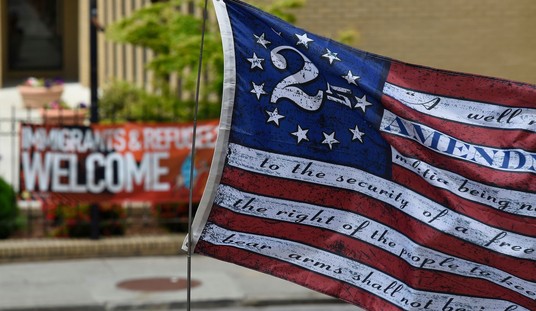A recent discussion on gun control with a couple of neighbors who would happily label themselves as liberals, included the statement from one of them that, “I believe in a living Constitution.”
That exclamation was immediately agreed to by the other.
Before I could ask how a living Constitution had anything to do with gun control, the discussion veered off on another tangent. But the question remains, just what does the living Constitution theory have to do with legitimizing gun control? The living Constitution theory as best I can simply described it, is that the meaning of the Constitution evolves over time.
By contrast the originalist theory, most notably championed by Justice Antonin Scalia, would interpret the Constitution in accordance with the meaning understood at the time of adoption.
The living Constitution concept appears to be a bit of a marketing ploy. After all who would want to live under a dead Constitution. In reality, the theory is often associated with broad interpretations of the due process and equal protection clauses, as well as broad interpretations of Federal power.
The underlying rationale is that the Constitution should be interpreted in accordance with current conditions and public mores. For example, Judge Richard Posner of the 7th Circuit has pointed to the Supreme Court’s decision in Griswold v. Connecticut, a case which invalidated a Connecticut law against the sale of contraceptives under the 14th Amendment’s due process clause which the Supreme Court has generally held to apply the bulk of the Bill of Rights to state law.
Justice William O. Douglas’s opinion announcing the decision of the court pointed to several of the first 10 amendments from which he divined a right of privacy sufficiently strong to invalidate the Connecticut law.
There is little in the history of the Constitution’s adoption to suggest that Connecticut’s ridiculous law or similar laws were intended by the framers to be enjoined and the Bill of Rights do not speak to a right of privacy in so many words. Nonetheless, a majority of the court, reflecting the contemporary views of the time, rightly I think found the act an impingement on the fundamental liberty of Connecticut residents. It is reasonable that in interpreting broad Constitutional provisions for courts to look for guidance to contemporary mores.
A prime example is the 8th Amendment’s prohibition on cruel and unusual punishment. It would shock the conscience of the overwhelming majority of Americans to allow the execution of a 13 year old child despite that such executions were not uncommon at the time of the founding of the union. And it is not a startling concept that the Constitution should be interpreted in light of current conditions.
Take the First Amendment. Modern means of communications, the Internet, telephones, blogosphere, radio and television, did not exist at the founding of the Republic.
These media have the capacity to amplify a message many orders of magnitude beyond what was possible in 1789, with the concomitant potential for harm, e.g., through libel or other propagation of falsehood or bigotry. Yet, no one, originalist nor living Constitutionalist, would suggest that these media lack the protection of freedom of speech and press because they did not exist when the First Amendment was ratified, although certain broadcast media might legitimately be subject to regulation to limit the exposure of children to obscenity or indecency.
This is because interpreting the First Amendment to exclude these media would run completely afoul of the amendment’s intent. Thus, the fact that modern media of communication are immensely more powerful today than in 1789 cannot justify restricting the right to speak over these media.
That would effectively nullify the First Amendment’s protections of speech and press. The analogy to the Second Amendment is clear and compelling. If we accept for sake of argument the concept of a living Constitution, that the Constitution should be interpreted in accordance with current conditions, the right to keep and bear arms should plainly be interpreted to protect the right of the people to bear not muskets and Bowie knives, but the most modern of personal weaponry without regard to their admitted enhanced lethality.
Just as TV and the Internet did not exist in 1789, nor did revolvers, semi-automatic rifles and detachable interchangeable magazines. Implicitly, that is the conclusion of originalist Justice Scalia in the Heller case. Justice Scalia interpreted the Second Amendment to protect the right to keep and bear weapons in common use at the time for purposes of self-defense.
In Heller’s case, his right was to keep a handgun for self-protection because it was the quintessential personal protection arm.
Heller thus suggests that such firearms as the AR-15 platform and other modern rifles now in common use, including those employing detachable magazines and ergonomic features such as adjustable stocks and pistol grips, are likewise protected arms under the Second Amendment.
As Justice Scalia said, this does not imply the right to keep and bear any weapon for any purpose. For example, hand grenades, land mines and rocket launchers are not weapons in common use for self-protection. They are weapons designed to kill soldiers and destroy material on the battlefield.
It follows that these weapons can be regulated consistent with the Second Amendment – my apologies to the absolutists among us. What does not follow is that a living Constitution theory would allow the prohibition of commonly used arms. That would essentially result in rendering the Second Amendment nugatory. The theory of my neighbors appears to be that modern society needs protection from weapons that can rapidly kill numbers of people.
But that is not a flexible interpretation of the Second Amendment. It is a transformation of the Amendment into something akin to, “A well regulated militia being necessary to the security of a free state, the right of the people to keep and bear arms shall not be infringed, except when Congress (or the states) decides that such arms are too dangerous.” Although my liberal friends likely would have no issue with that Second Amendment, it creates its own issues. All arms are inherently dangerous, so there would appear no real limit to the government’s power to restrict the right to arms.
Moreover, since one of the purposes of the Second Amendment was to secure a body of citizens trained in arms who could serve as a militia in defense of country and freedom, limiting the ability of the populace to keep and bear modern arms falls squarely in contradiction to the essential liberty enhancing role of the Second Amendment.
The Constitution was designed to place limits on both the federal and state governments in order to protect the people’s liberty. A theory of Constitutional interpretation which prevents the document from becoming an anachronism perhaps makes sense.
A theory of Constitutional interpretation which effectively removes the limits on the federal and state governments whenever a majority of the legislature thinks it is a good idea, essentially ignores the Constitution itself.
Properly understood then, even under a living Constitution theory, the Second Amendment protects those arms in common use by the people.








Join the conversation as a VIP Member